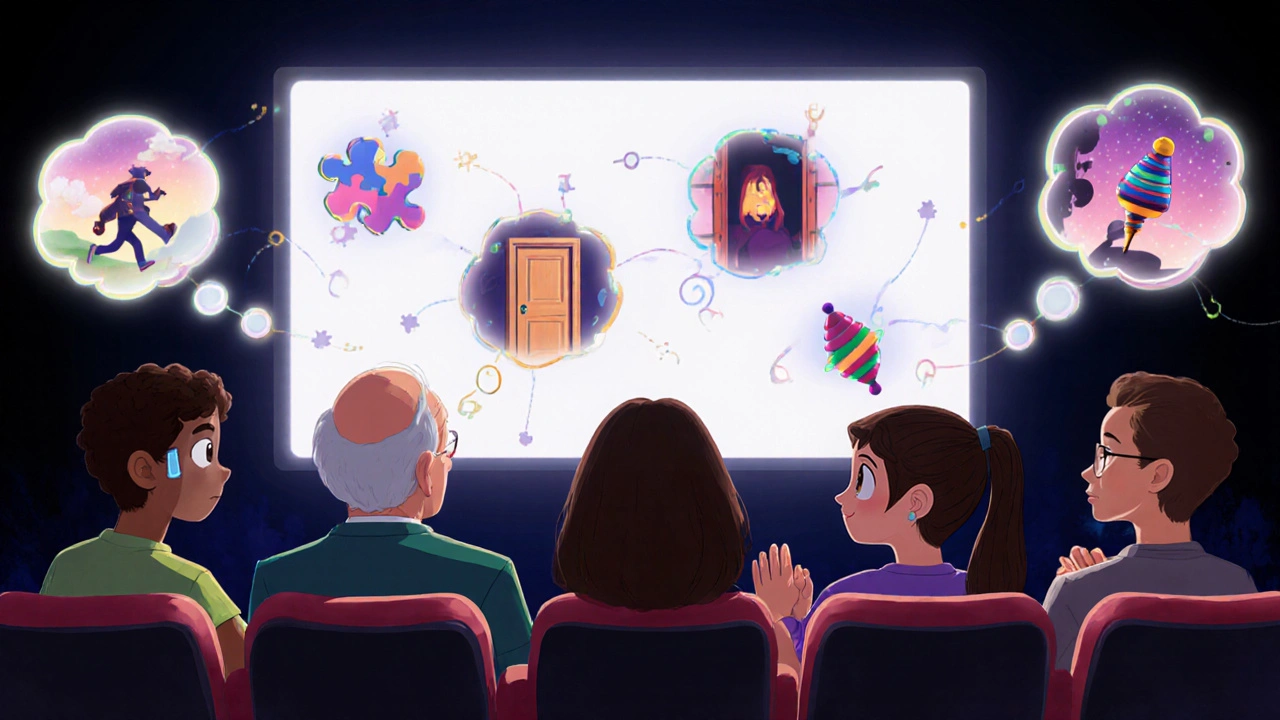Narrative Processing in Film: How Stories Shape Our Minds
When you watch a movie and feel like you’ve lived another life, that’s narrative processing, the brain’s natural way of organizing events into meaningful stories. Also known as story comprehension, it’s not just about following plot points—it’s how your mind connects emotions, memories, and expectations to turn images and dialogue into something personal. This isn’t just theory. Studies in cognitive psychology show that when people engage with well-structured narratives, their brains release oxytocin, the bonding hormone, making them feel closer to characters—even fictional ones.
Narrative processing doesn’t need big budgets. It thrives in indie films where restraint, ambiguity, and emotional truth replace flashy effects. Think of Agnès Varda’s essay films, where personal memory blends with documentary footage, or long-distance love stories that use silence and missed calls to build tension. These aren’t just stories—they’re invitations for your brain to fill in the gaps. That’s why film storytelling, the art of arranging events to evoke emotional and cognitive responses matters more than spectacle. It’s why a single close-up of a character’s face can feel more powerful than a CGI explosion. Your brain is wired to find meaning in patterns, and great filmmakers know how to use that.
Behind every great film is a hidden architecture: cause and effect, rising stakes, emotional payoffs. These aren’t just writing rules—they’re how human minds naturally make sense of chaos. cognitive engagement, the mental effort your brain puts into understanding and connecting with a story is what keeps you watching, even when you’re tired. That’s why a slow-burn thriller like David Fincher’s The Killer works: it doesn’t shout—it waits. And in that waiting, your mind starts predicting, questioning, feeling. Meanwhile, films like Barbie or Princess Mononoke use symbolic imagery and character arcs to tap into deeper cultural narratives, turning entertainment into reflection.
Narrative processing isn’t just about what happens on screen—it’s about what happens inside you. It’s why you remember a line from a 20-year-old indie film but forget the plot of the latest blockbuster. The best films don’t tell you what to think. They give you the pieces and let your mind build the picture. That’s the magic of Scruffy City Film Fest: it doesn’t just show movies. It shows stories that stick. Below, you’ll find deep dives into how films use structure, symbolism, and emotion to make us feel—and think—in ways we didn’t know we needed.
Cognitive film theory explains how viewers actively build stories and feel real emotions from movies using universal mental processes. Learn how perception, memory, and empathy shape your movie experience.
View More

